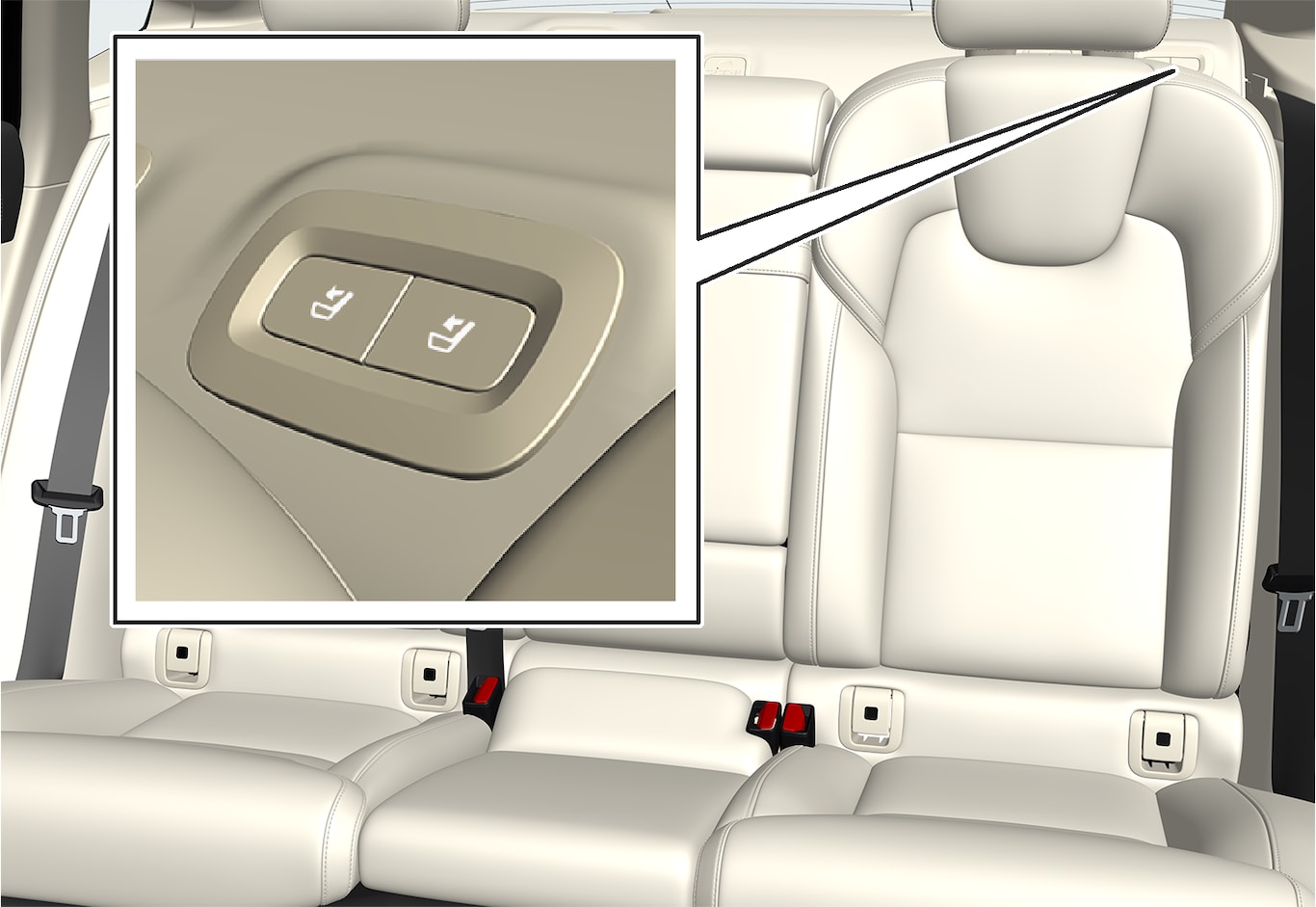Warning
- Adjust the seat and fix it before driving away. Take care when adjusting the seat. Uncontrolled or careless adjustment can lead to trapping injuries.
- When loading long objects, they must always be strapped in securely to avoid injury and damage during sudden braking.
- Always switch off the car and apply the parking brake when loading and unloading the car.
- For cars with automatic gearbox, set the gear selector in P to prevent it from being moved by mistake.
Important
There must be no objects on the rear seat when the backrest is to be folded down. The seat belts must not be connected either. Otherwise there is a risk of damaging the rear seat upholstery.
Important
Note
When private locking is activated, the rear seat must be in upright position for locking to work. With the rear seat in lowered position, locking will not work.
Note
The front seats may need to be pushed forwards, and the backrests adjusted upwards, in order that the rear backrests can be fully folded forward.
Lowering the backrest
To facilitate folding of the rear seat, the car must be stationary and at least one rear door open.

Ensure that there are no occupants or objects in the rear seat.
Lower the centre seat's head restraint manually.
Press and hold one of the buttons located in the parcel shelf on the left-hand side of the car.
The seat is released from the lock but remains in the same position. The head restraints are lowered automatically.
Lower the backrest manually to the horizontal position.
Raising the backrest
Raising the backrest to upright position is carried out manually:
Move the backrest up/back.
Press the backrest until the lock engages.
Raise the head restraints manually.
If necessary, raise the centre seat's head restraint.
Warning
Check that the backrests and head restraints in the rear seat are locked properly after being folded up.
The head restraints of the outer seats must always be raised when there are passengers on any of the rear seats.